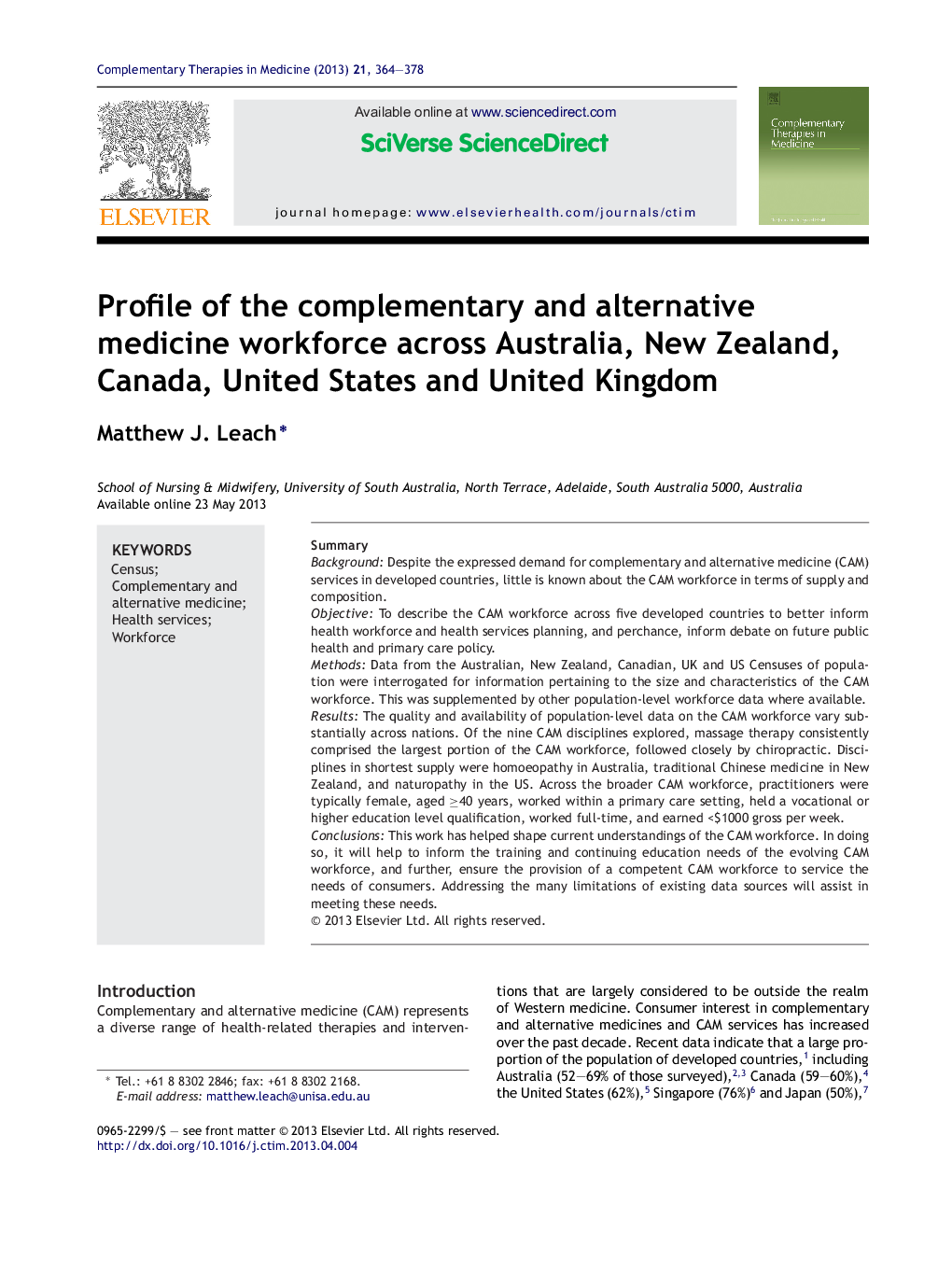| Article ID | Journal | Published Year | Pages | File Type |
|---|---|---|---|---|
| 2629300 | Complementary Therapies in Medicine | 2013 | 15 Pages |
SummaryBackgroundDespite the expressed demand for complementary and alternative medicine (CAM) services in developed countries, little is known about the CAM workforce in terms of supply and composition.ObjectiveTo describe the CAM workforce across five developed countries to better inform health workforce and health services planning, and perchance, inform debate on future public health and primary care policy.MethodsData from the Australian, New Zealand, Canadian, UK and US Censuses of population were interrogated for information pertaining to the size and characteristics of the CAM workforce. This was supplemented by other population-level workforce data where available.ResultsThe quality and availability of population-level data on the CAM workforce vary substantially across nations. Of the nine CAM disciplines explored, massage therapy consistently comprised the largest portion of the CAM workforce, followed closely by chiropractic. Disciplines in shortest supply were homoeopathy in Australia, traditional Chinese medicine in New Zealand, and naturopathy in the US. Across the broader CAM workforce, practitioners were typically female, aged ≥40 years, worked within a primary care setting, held a vocational or higher education level qualification, worked full-time, and earned <$1000 gross per week.ConclusionsThis work has helped shape current understandings of the CAM workforce. In doing so, it will help to inform the training and continuing education needs of the evolving CAM workforce, and further, ensure the provision of a competent CAM workforce to service the needs of consumers. Addressing the many limitations of existing data sources will assist in meeting these needs.
